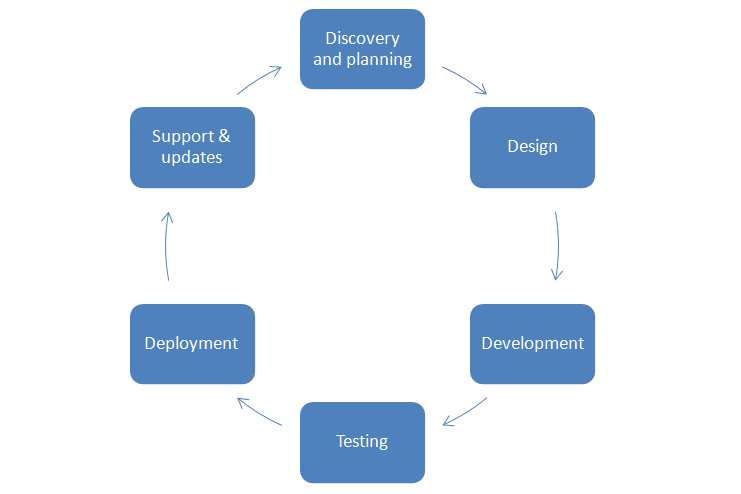- July 18, 2022
- Advaiya
- Business Productivity, Comprehensive business management, Dynamics 365 ERP, Enterprise resource planning, ERP adoption process, ERP implementation, ERP implementation partner, ERP implementation plan, ERP implementation process, ERP partner, ERP software implementation, ERP solution, ERP solutions, ERP systems, Microsoft Dynamics 365 Business Central, Work management and business productivity
An enterprise resource planning or ERP implementation solution offers significant benefits, especially in today's mobile-savvy marketplace & complex business processes.
If your corporation needs a software suite to manage its financial, human resources, supply chain, and other business operations, a centralized and integrated comprehensive business management system like Microsoft Dynamics 365 Business Central may be the useful and advantageous choice to go to. Dynamics 365 ERP enables your organization to access a shared database on any device reliably and offers easy customization, reduced technical costs, and improved productivity.
However, there are a few key phrases in the ERP adoption process, each with its own objectives. These phases could be distinct or overlap, depending on the specific requirements of the company.
Successful ERP implementation & upgradation of new business processes

Phases of an ERP implementation plan –
A typical ERP implementation life cycle includes six stages starting from discovery and planning, design, development, testing, and deployment to support and updates.
Phase 1: Discovery and planning
ERP offers comprehensive solutions to a wide range of business problems. It's important to determine the true reason for putting ERP into place for your company, though. Your ERP implementation partner assesses your existing systems and procedures to identify the requirements, project scope, milestones, and modifications required. Once your vision and requirements are identified, the implementation partner will prepare the project plan.
As per the study by Panorama, 61.1% of ERP implementations take longer than expected and 74.1% of ERP projects exceed the budget. Although the primary cause of delay and overbudgeting is unclear definitions of ERP implementation. The ERP features must be evaluated in accordance with the barometer of synchronization within the needs of the company. The ERP demand list should be created in accordance with the budget and fundamental requirements to ensure a seamless and obstacle-free ERP deployment.
Phase 2: Design phase
ERP deployment includes several goals, including improving financial control, supporting organic growth, mergers, and acquisitions, as well as other typical procedures. The team will work on the specific criteria here in order to create the precise design of the new ERP system that your business needs. This entails creating a new, more effective business procedure and workflow. Since they have the most detailed knowledge of the current business process, users must be involved in the design of the new workflow. Additionally, it will also ensure that they will accept and use the new ERP solution.
Phase 3: Development
The development teams put up the standard solution using agreed-upon configurations and customizations of the ERP solution to support the newly specified process after they had clear design requirements. ERP software is designed after a significant amount of research and according to the needs of the specific industry. In some cases, there may be no need for customization. Additionally, the development phase also entails creating integrations with other work management and business productivity tools that ERP systems won't be able to replace.
Phase 4: Testing
Testing is an important phase of the implementation process, which takes care of system and user acceptance testing. In many cases, testing and development can occur concurrently. For instance, the team may test-specific modules and features while implementing fixes and adjustments based on test results or may test one module while the other is in development. Sometimes this phase also includes beta testing, where some employees test the system for their day-to-day activities. This process ensures the ERP solution meets the requirements and is ready for deployment. During the pilot testing, management must evaluate the realization of the value of the system against the desired value of the company.
After the successful testing and ensuring the ERP readiness for deployment, data migration activity should be performed before go-live. Under this process, the data from the old system is mapped to the new ERP. To ensure a smooth transition and future use of the software, only the most essential data should be transferred, and great care should be taken to ensure the data will be retrieved from the software whenever required.
Training is also the most important aspect of the ERP software implementation process. It ensures there are fewer issues and more success, especially when ERP is implemented for the first time in the company or when the platform is changed from one ERP solution to another.
Phase 5: Deployment
This is the phase you've been striving toward: the go-live date! This is the day when you can officially get started with your new ERP software. Be ready for problems because, despite your best attempts to prepare for them, there may be many moving pieces and confused staff. Your ERP implementation partner will give your staff the necessary instructions and directions to comprehend the system, and they'll be on hand to respond to inquiries and try to resolve any problems.
The majority of data will be moved in the development and test phase. However, other information such as current open transactions should be transferred immediately before it goes live.
Phase 6: Support and updates
As you become more accustomed to the software, you might need help to create a plan to scale up your ERP solution along with your business. After deployment, your ERP partner will help to keep you satisfied and ensure your business achieves the desired benefits. During this phase, your implementation team may still be in charge of the ERP solutions, but they will now be more concerned with gathering feedback and making necessary adjustments to the system.
Some organizations aim to focus on specific high-priority modules or processes and add others later, thus, some additional development and configuration will be integrated into the system later whenever needed. Implementing an ERP solution is a big investment decision by the company involving a large number of resources, therefore, management must continuously maintain tabs on the ERP software and maintenance schedule.
Bottom line –
Successful implementation of ERP software requires a significant amount of time and effort. The easiest method to streamline the ERP deployment process and ensure the ERP solution will help your organization as much as possible is to adhere to this six-step process while remaining collaborative.
Looking for the right ERP implementation partner for your business's unique needs? Consult Advaiya.
To connect with us drop us a mail at [email protected] or call +1-425-256-3123 (US), +91-22-6259-0570 (India)





